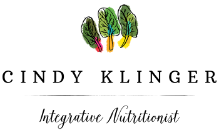Growing up in New York, we had high-quality seafood stores nearby. My mom would come home with amazingly fresh fish for dinner like white salmon, flavorful and hearty shrimp, and other buttery, flaky cuts of various fish that tasted super fresh. Now that I live smack dab in the middle of the country, finding high-quality fish has proven difficult. My local Whole Foods has some sustainable and fresh options, but even they carry salmon that contains added dyes, in addition to farmed fish or seafood from undesirable waters or caught via less-than-ideal practices.

That’s why I am really excited to try a CSF, or community supported fishery. Think boat to table rather than farm to table. Similar to a CSA (community-supported agriculture), where you can buy into a share of weekly produce (and/or eggs and meat items) from a local farm, people pay ahead of time to receive a box of participating fishermen’s harvest delivered to your home or a close pickup location. Most CSFs focus on sustainability, cut out the middleman and provide members with wild seafood that tastes way different (read: better) than what you can find at most grocery stores. The Midwestern-based Sitka Salmon is one such local (for me) option, which is made up of 13 family fishermen who catch the fish in Alaska before it’s blast frozen and shipped to the mddle of the country. CSFs maintain transparency throughout the food chain, so you know who caught your fish, as well as when and where.This year’s selection includes wild Alaskan king salmon, sockeye salmon, coho salmon, keta salmon, lingcod, black bass, black cod, Pacific cod, yelloweye, dusky rockfish, spot prawns, Dungeness crab and halibut. Not only are the fishermen paid a fair wage, but Sitka Salmon Shares donates 1 percent of CSF-related revenue toward conservation and habitat protection efforts of the fisheries, and they pay to offset the carbon used in the Alaska-to-Midwest delivery process. sitkasalmonshares.com
Don’t live in the Midwest? Find a CSF near you here. Vital Choice (vitalchoice.com) also offers wild seafood, meat, supplements and other foodstuff, and ships throughout the country.
Joining a CSF helps take the guesswork out of which fish are the best to purchase and eat, because they’re usually focused on sustainability, appropriate fishing practices and wild-caught seafood. But what happens if you head to the grocery store or restaurant? How do you know which fish to order? The Monterey Bay Aquarium’s Seafood Watch is the place to turn. It offers an app, consumer guides and lots of information about the healthiest waters and safest fish, and also has an easy-to-understand rating system. It explains why the same fish from different seas, for instance, have different recommendations. One might be best avoided while the other might offer great health benefits. You’ll also learn about fishing practices and where most of each type of fish comes from. For instance, 90% of the shrimp eaten in the US is imported, and many types are on the Seafood Watch’s “avoid” list. You can also read about seafood as it relates to health, and find some sustainable recipes on the website.
Have you tried a CSF or used Monterey Bay’s Seafood Watch program? Let me know what you think!
Images from Sitka Salmon.



